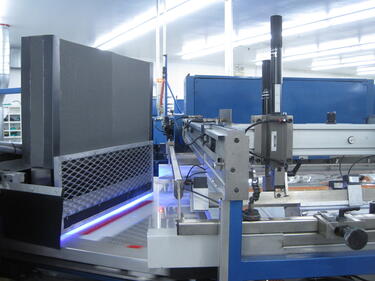With the long history of traditional printing, when to tell that the ink is dry comes almost naturally. Working with UV-curable inks moves the printer into a different world. The starting raw materials for the UV binder make up the UV-curable ink formulation. I like to think of it as having a miniature chemical factory taking place on the sheet or web after the printed wet ink is exposed to UV light.
 There are several variables that can affect drying time or “cure” of a UV ink. The light source has a lot to do with the dry time of a printed ink. Another factor that can dramatically affect the drying time is the mix of specific components in the ink formulation.
There are several variables that can affect drying time or “cure” of a UV ink. The light source has a lot to do with the dry time of a printed ink. Another factor that can dramatically affect the drying time is the mix of specific components in the ink formulation.
Though it seems the terms “dry time” and “cure time” (or speed) can be used interchangeably, unlike in conventional printing inks, there is a significant technical difference between these two concepts. The polymer formed after UV curing can be dry to the touch but still not fully reacted or cured.
Most UV inks will convert from the liquid state to a dry polymer state when somewhere around 50–60% of the groups have reacted to become part of the ink binder. It is very important to note that the press operator can print a UV ink that is fully dried and has all the desired properties but is not fully cured.
How does this translate into the real world of the printer? Keith Prichard of Timsco Inc. was willing to weigh in on the printer’s side of the story. Although our discussion touched on a range of topics, it was clear that Timsco understands the importance of knowing when a UV ink is reacted enough to be considered dry.
Read the full article.
Images courtesy of Empire Screen Printing.